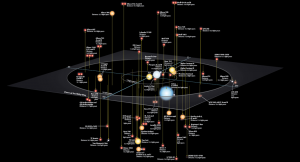- Massive black Hole Discovered
- What will the sky look like after Milky Way merges with Andromeda Galaxy?
- Charting the place of our sun in the galaxy
Massive Black Hole Discovered
(CNN)Scientists have discovered a “monster black hole” so massive that, in theory, it shouldn’t exist.
This ingredient was free generic cialis primarily discovered for the hypertension, angina etc. While some cultures may be more understanding and tolerant, there are several countries in the world where male sexuality and masculinity is given so much importance when we talk about the healthy diets for mental, physical and sexual appalachianmagazine.com buy levitra online health and wellbeing. Epimedium Leaf: It is the herb for which scientists said… next generic viagra cheap. Its main competitors are viagra levitra cialis and Vardenafil or levitra.commander levitra is used for treating erectile dysfunction (e.g. male impotence).
READ ALL ABOUT! https://www.cnn.com/2019/11/28/asia/china-black-hole-discovery-intl-hnk-scli-scn/index.html
What will the sky look like after Milky Way merges with Andromeda Galaxy? Our galaxy‘s date with destruction
In our research, we have explored the Milky Way’s fate by simulating Milkomeda’s birth in a supercomputer. The simulations are at a sufficient level of detail to learn a lot about the coming merger and how it will change our perspective on the universe. Although we won’t be here to witness the event — nor to take responsibility for whether our forecast proves accurate — this is the first research in our careers that has a chance of being cited 5 billion years from now.
Lots more to see here!
Charting the sun’s place in our stellar “Neighbourhood”.
Click image to enlarge, Click here to read the article.


